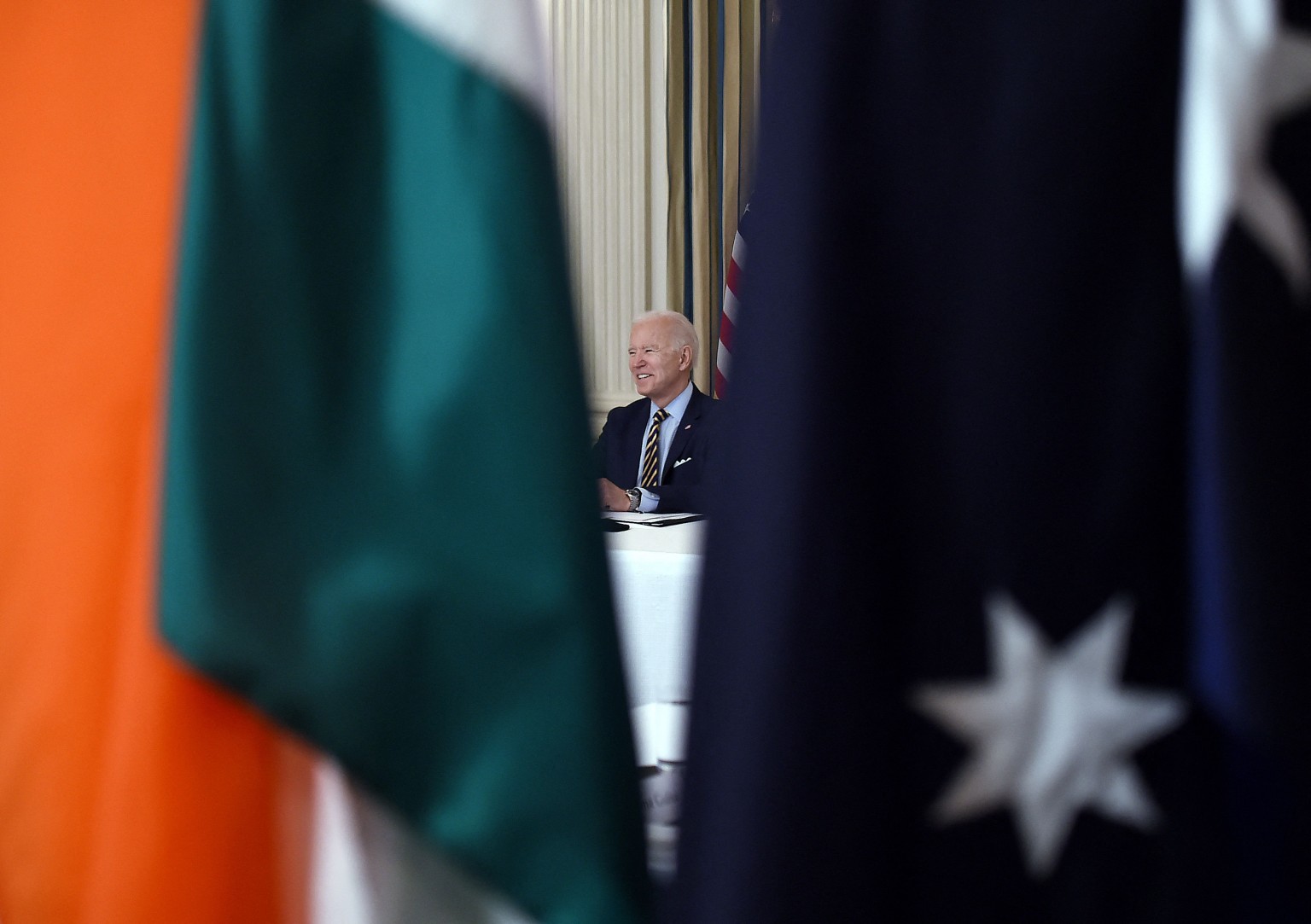At IAEA, India Supports AUKUS
THE DIPLOMAT
APLN member Rajeswari Pillai Rajagopalan writes on India’s proactive engagement at the IAEA’s general conference on the AUKUS in the face of Russian and Chinese opposition. Read the original article here.
AUKUS, and specifically the plan to transfer nuclear-powered submarines to Australia, was under intense debate at the General Conference of the International Atomic Energy Agency (IAEA) held in Vienna from September 26-30. Russia and China tried hard but unsuccessfully to get the IAEA to oppose the planned transfer. At the IAEA General Conference held last week, Russia said that AUKUS posed unprecedented challenges to the nuclear non-proliferation treaty (NPT) regime with two nuclear weapons states supplying a non-nuclear weapons state with 2 tons of highly enriched uranium.
The IAEA, in its earlier report, stated that it was “satisfied with the engagement shown so far by the United States, Britain and Australia on their AUKUS alliance’s plan to supply Australia with nuclear submarines.” IAEA Director General Rafael Grossi said that AUKUS, in terms of inspections of the nuclear submarines, is “very tricky” but it “can be managed.”
Under the AUKUS agreement, Australia is set to receive eight conventionally armed but nuclear-powered submarines. The capability build-up by the three parties – Australia, the U.K. and the U.S. – is primarily aimed at the increasingly aggressive and muscular behavior of China in the Indo-Pacific and beyond. For AUKUS to take effect and for the U.K. and the U.S. to transfer nuclear-powered submarines, Australia “has voluntarily committed to not domestically enrich or reprocess nuclear material in support of the nuclear-powered submarine program.” Further, the U.K. ambassador to the IAEA, who made a statement on behalf of the three partners, noted that “Our goal is to enable verification of the non-diversion of nuclear material in our nuclear propulsion-related cooperation under AUKUS by proceeding under the framework of Australia’s Comprehensive Safeguards Agreement and Additional Protocol with the IAEA.”
India stood with its new security partners even as China vehemently campaigned against the proposed transfer. China even pushed for a resolution at the IAEA against AUKUS for providing Australia with nuclear submarines. China made a case that AUKUS was in violation of responsibilities (by the partner countries) under the NPT. The resolution was also critical of the IAEA’s role.
In a position paper to the IAEA, China claimed that “The AUKUS partnership involves the illegal transfer of nuclear weapon materials, making it essentially an act of nuclear proliferation.” The AUKUS partners and the IAEA noted that the NPT permits nuclear propulsion technology provided the member states make the necessary arrangements with the IAEA such as the Comprehensive Safeguards Agreement and Additional Protocol with the IAEA. China disagrees with that view though. The U.S. in its non-paper on nuclear propulsion cooperation under AUKUS stated that “Like the NPT, the IAEA’s model agreement for NPT safeguards and verification, the Comprehensive Safeguards Agreement (CSA-INFCIRC/153), permits naval nuclear propulsion activities. INFCIRC/153 is the basis for most countries’ CSAs, including Australia’s, and in conjunction with the application of an Additional Protocol, is the IAEA’s current highest safeguards and verification standard. Australia’s naval nuclear propulsion activities will occur within the framework of Australia’s CSA and Additional Protocol. These agreements provide the firm legal basis on which the IAEA, through the Director General and the Secretariat, is engaging with Australia and AUKUS partners.”
Recently, a spokesperson at the Chinese embassy in Canberra criticized the IAEA’s report on its safeguards relating to AUKUS by saying that the “Director-General’s report is an act of ultra vires. It is neither neutral nor objective, still less professional.” The spokesperson called the report lopsided and that it “made no mention of the international community’s major concerns over the risk of nuclear proliferation that may arise from the AUKUS nuclear submarine cooperation” and that it “turns a blind eye to many countries’ solemn position that the AUKUS cooperation violates the purposes and objectives of the Non-Proliferation Treaty (NPT), and draws misleading and ultra vires conclusions that are completely inconsistent with the reality.”
The spokesperson went on to add that the IAEA “must not overstep its authority and carry out activities that are not mandated by Member States and particularly its decision-making body, such as the Board of Governors. AUKUS nuclear submarine cooperation goes beyond the existing international nuclear non-proliferation regime and the scope of responsibilities of the IAEA Secretariat.” The spokesperson said the AUKUS deal amounted to the illegal transfer of nuclear weapons materials and that “it sets a bad precedent” to the rest of the international community. The spokesperson added that AUKUS is a threat to regional peace and stability, by invoking the South Pacific Nuclear-Weapon-Free Zone Treaty and ASEAN efforts to establish the Southeast Asian-Nuclear-Weapon-Free Zone. To this point, the U.S. non-paper on nuclear propulsion cooperation clarified that “Australia’s prospective acquisition and operation of naval nuclear propulsion would also be consistent with Australia’s obligations under the Treaty of Rarotonga, which establishes the South Pacific Nuclear Free Zone.”
More than two weeks ago, the Chinese Foreign Ministry spokesperson made similar assertions and called on the IAEA “to adopt an objective, neutral and professional position on the issue, fulfill its duty in strict accordance with its mandate, and provide a platform for discussing and addressing member states’ concerns over nuclear proliferation regarding the AUKUS nuclear submarine cooperation. We also call on all IAEA member states to continue to have substantive discussions on AUKUS nuclear submarine cooperation through the inter-governmental process, take concrete actions to uphold the international non-proliferation system with the NPT as its cornerstone, and safeguard international peace and security.”
Clearly, China has been rattled by the support the AUKUS countries have managed to get on this issue at the IAEA. The steadfast support for AUKUS came not merely from their traditional Western allies but even the new security partners of the global South such as India. India reportedly worked with many IAEA member states to ensure that China’s resolution “did not get majority support.” On the Chinese resolution, the U.S. non-paper stated that “We would be deeply disappointed by a standalone resolution on AUKUS. Such a resolution would be highly inappropriate and clearly undermine efforts to depoliticise this issue in the IAEA.”
According to Indian media reports, “India took an objective view of the initiative, recognising the soundness of the technical evaluation by IAEA.” Reportedly, the Indian Mission to the IAEA worked with many IAEA member states to recognize the merits of the AUKUS. Another Indian media report cited sources saying that “India’s considered role helped many smaller countries take a clear stand on the Chinese proposal.” Seeing that China was not able to get majority support, it withdrew the resolution on the last day of the conference.
India’s proactive engagement at the IAEA on the AUKUS issue is important for a couple of reasons. One, it recognizes the merit of the proposal and the importance of having a more capable Australian Navy. Second, despite the fact that India has not been able to wean itself away from its Russian partnership entirely, such proactive Indian engagement is a testament to the fact that New Delhi’s strategic partnerships with its new security partners are important in its overall strategic calculus. India’s position on the AUKUS at the IAEA is also in recognition and appreciation of the support extended to India by Australia, U.K. and the United States on India’s Nuclear Suppliers Group (NSG) membership as well as on counter-terrorism issues.
Image: Australian Defense Images




